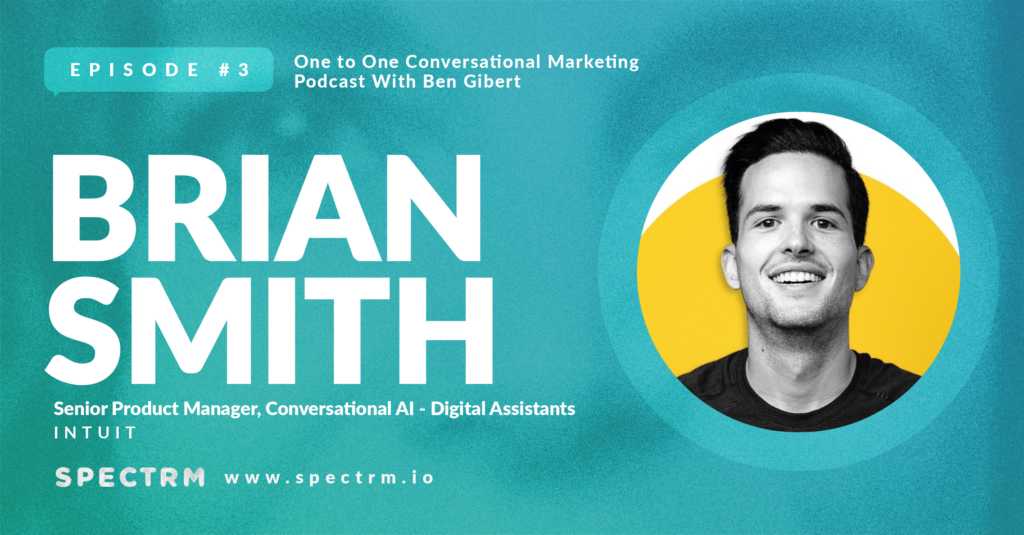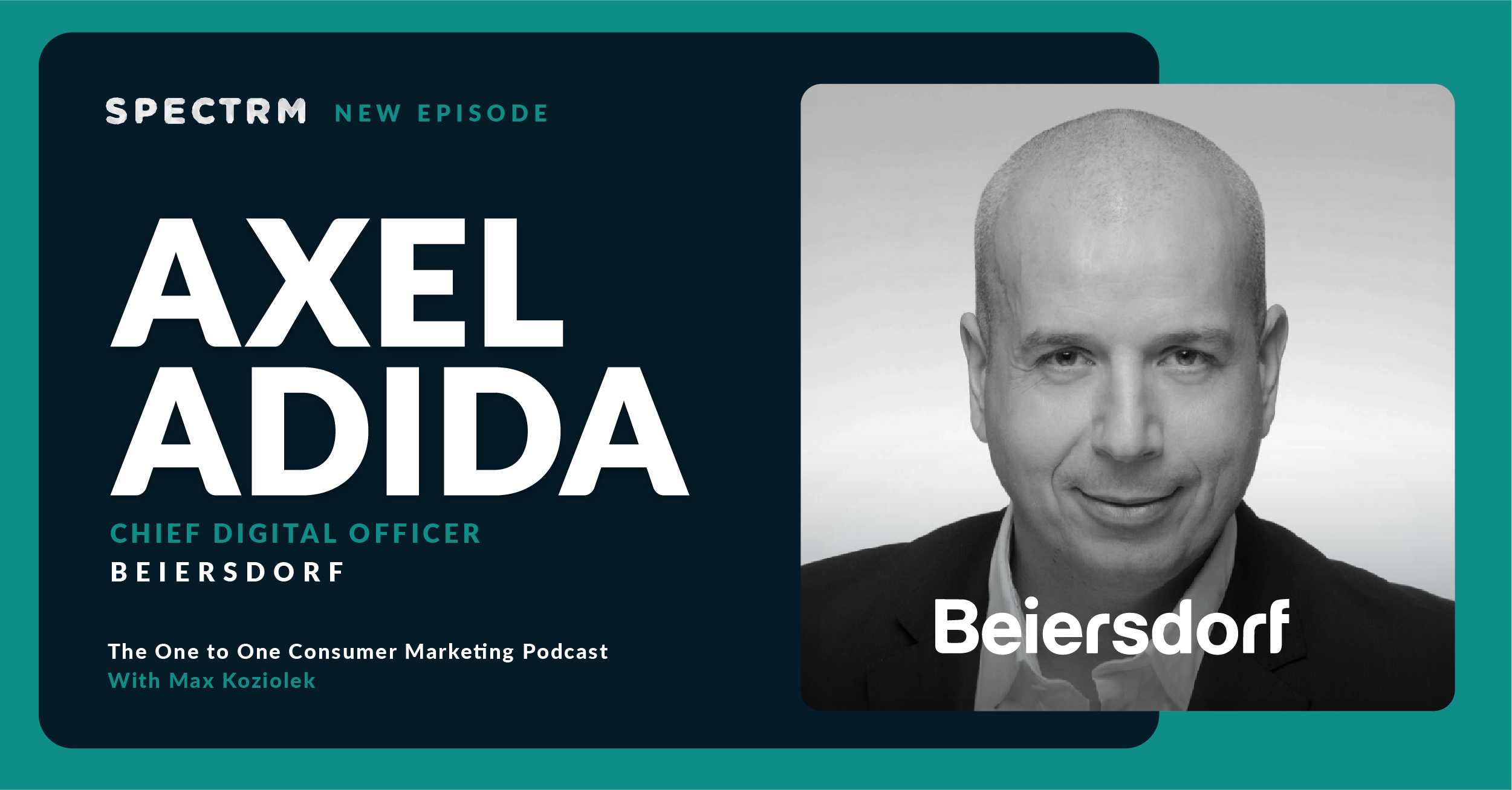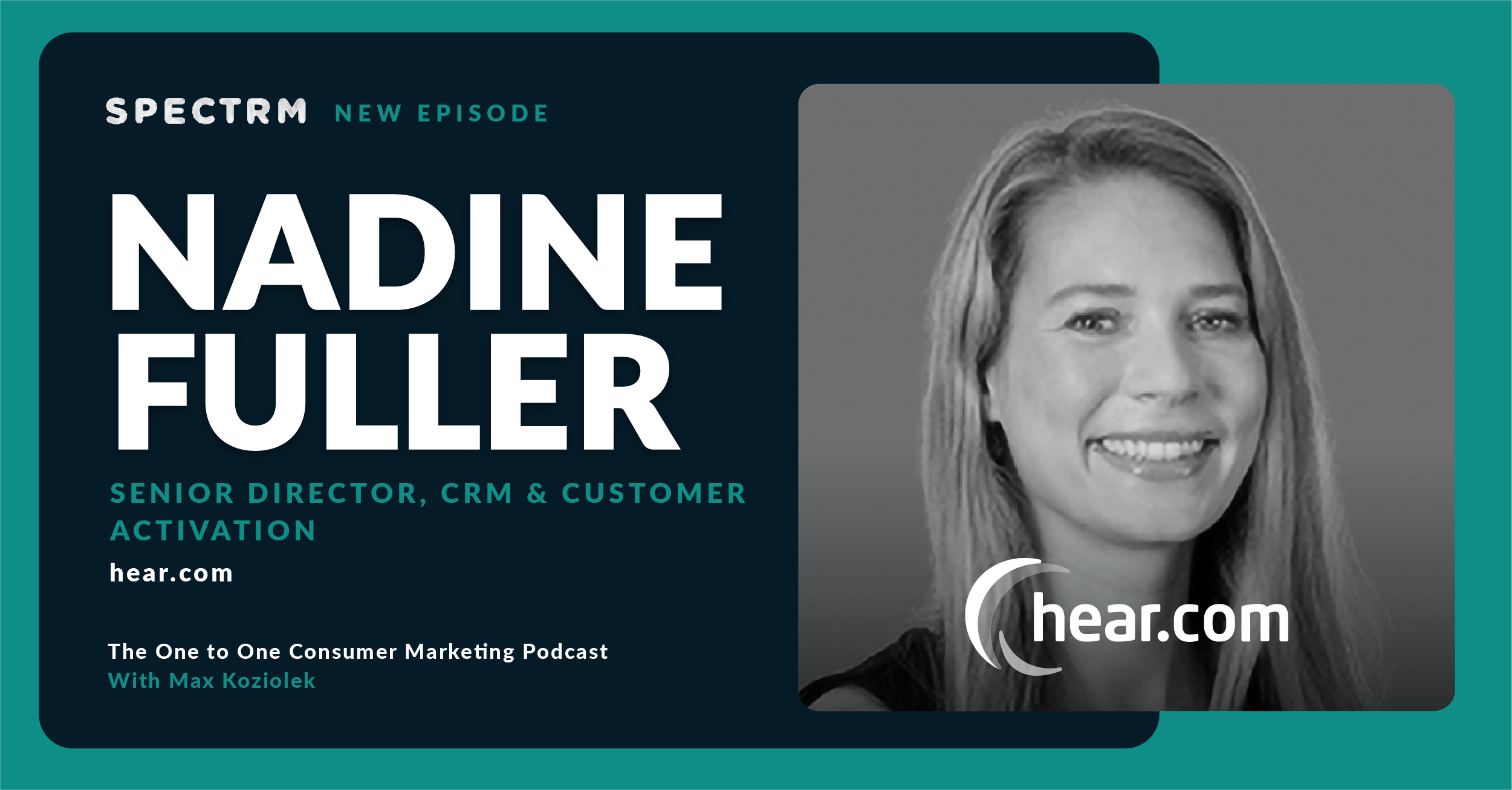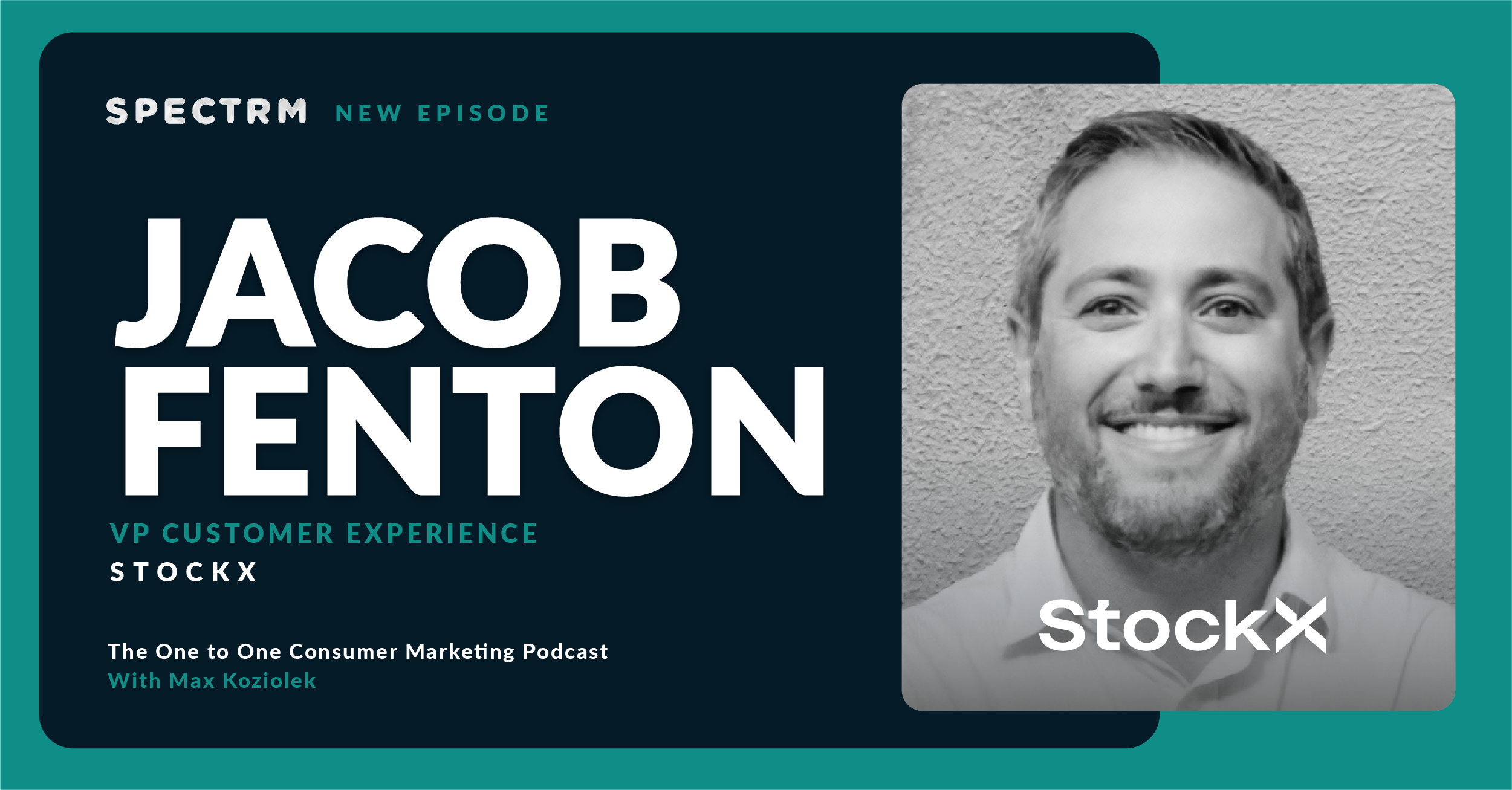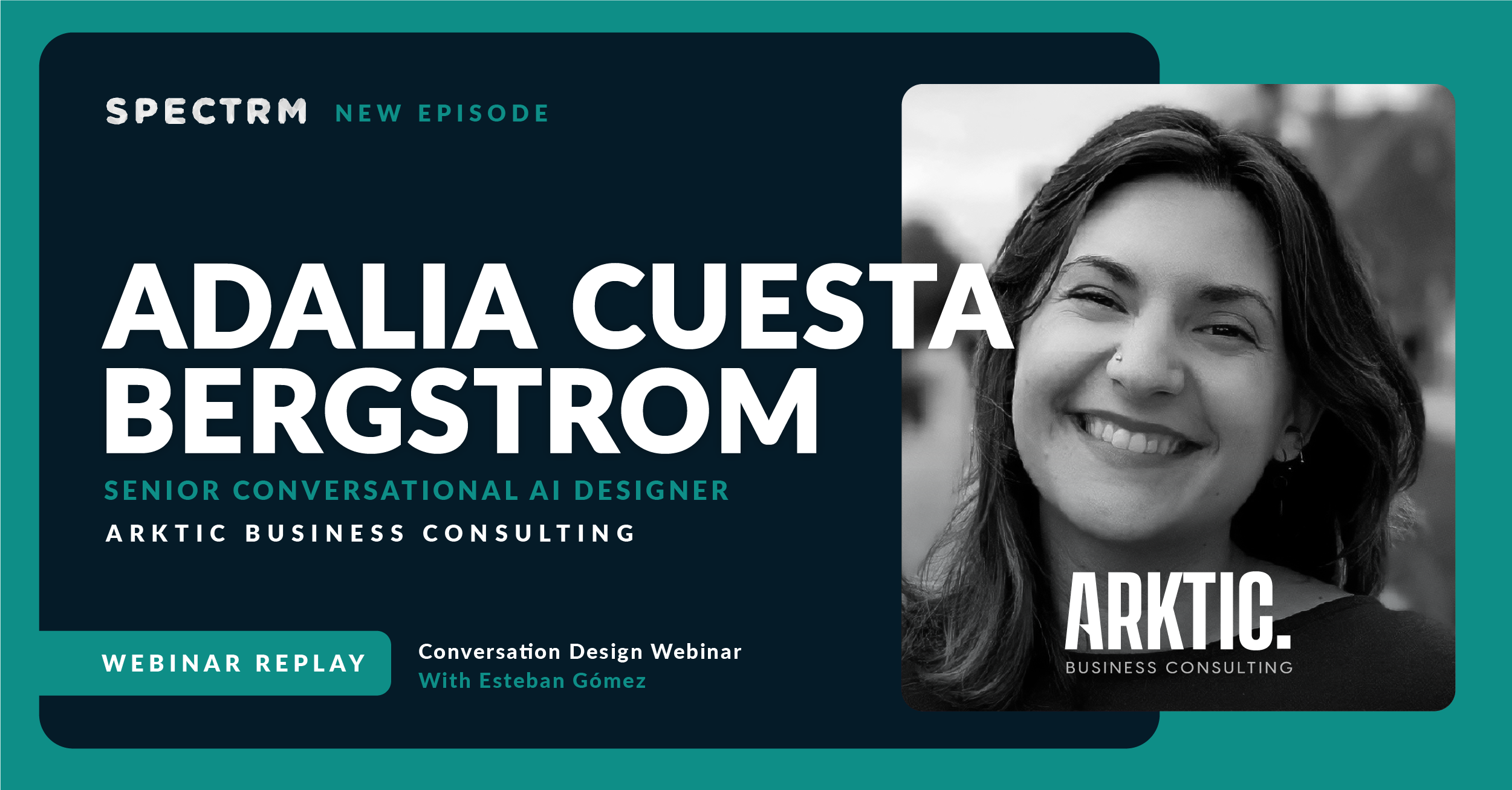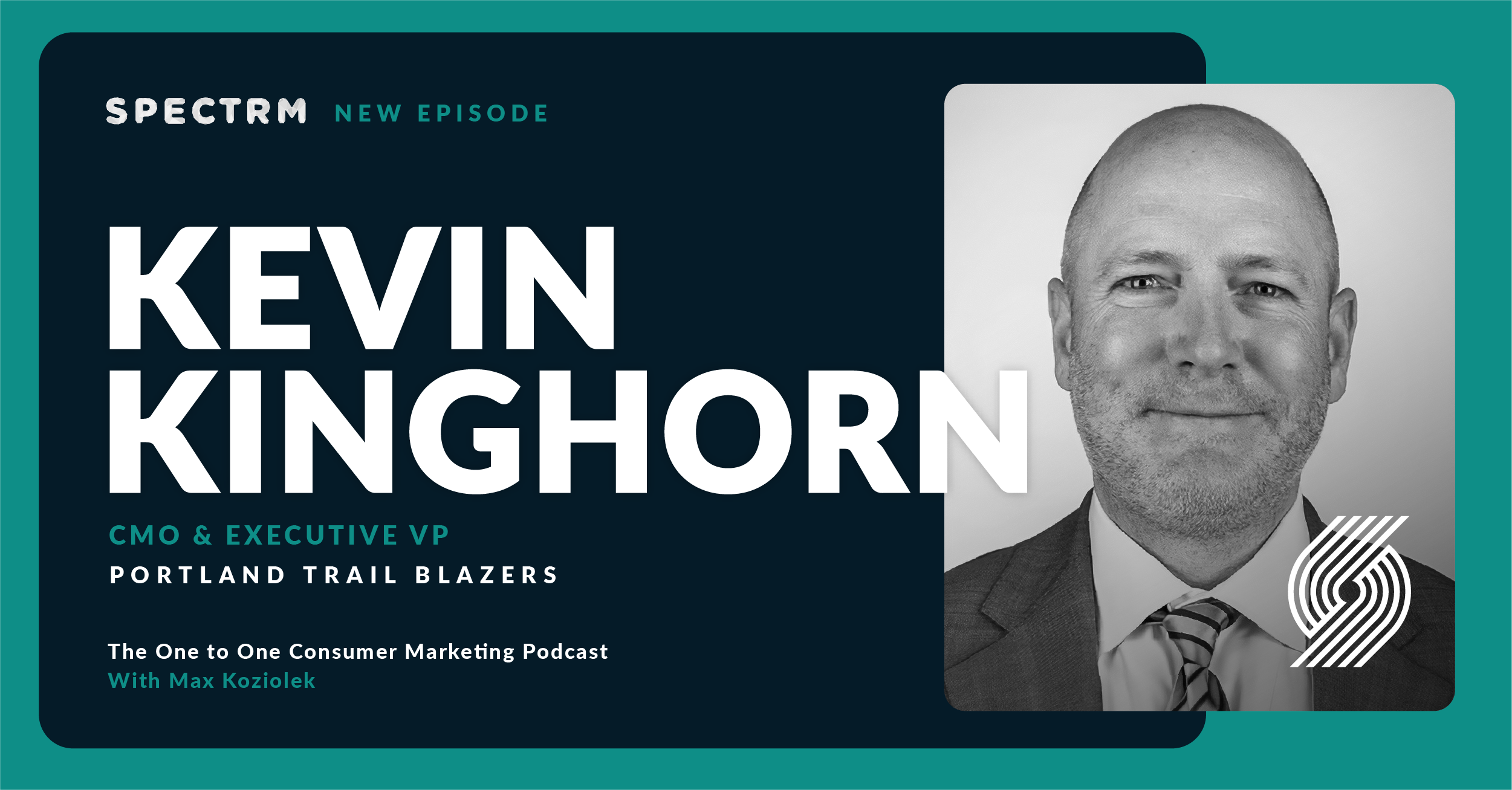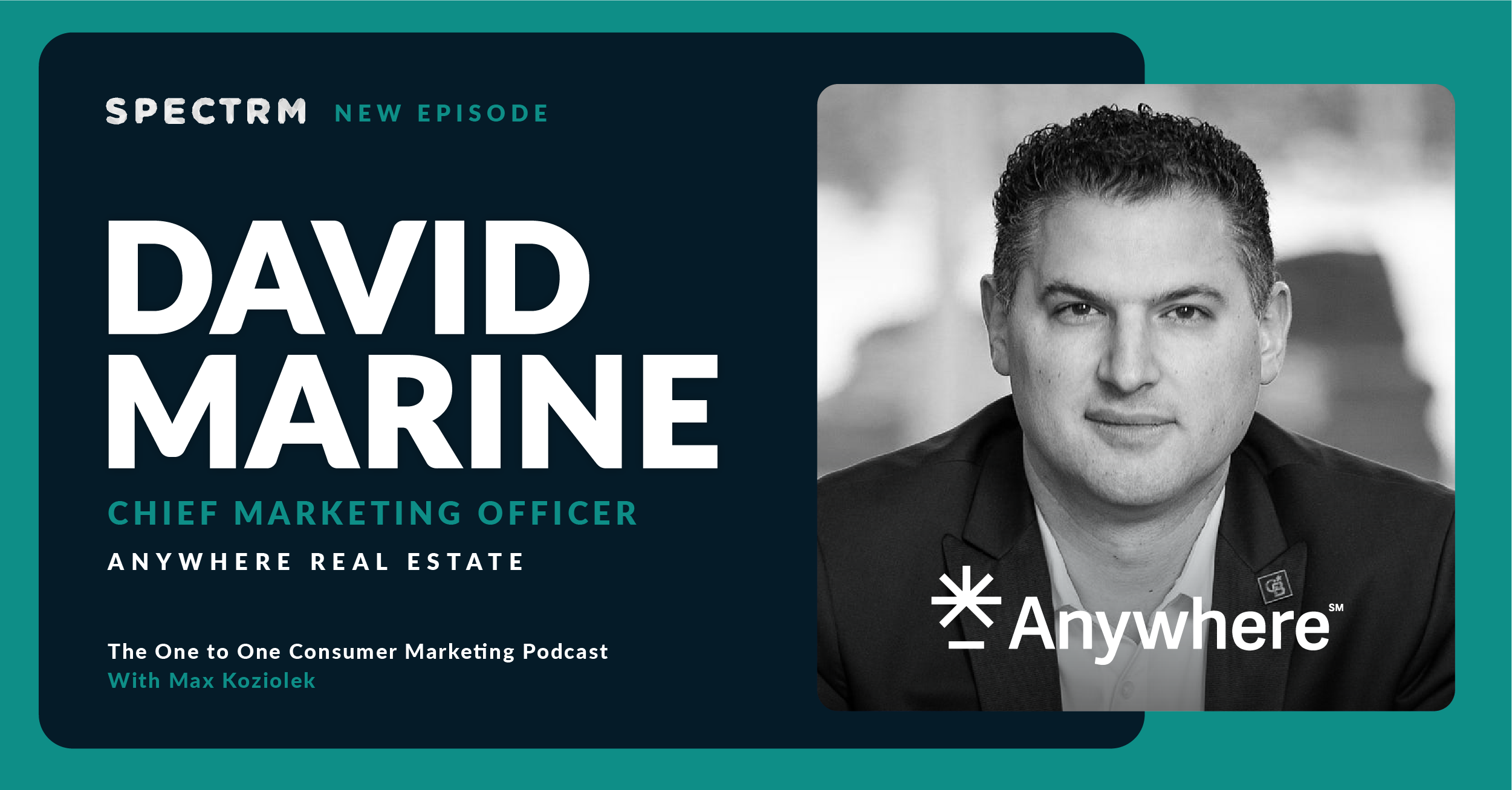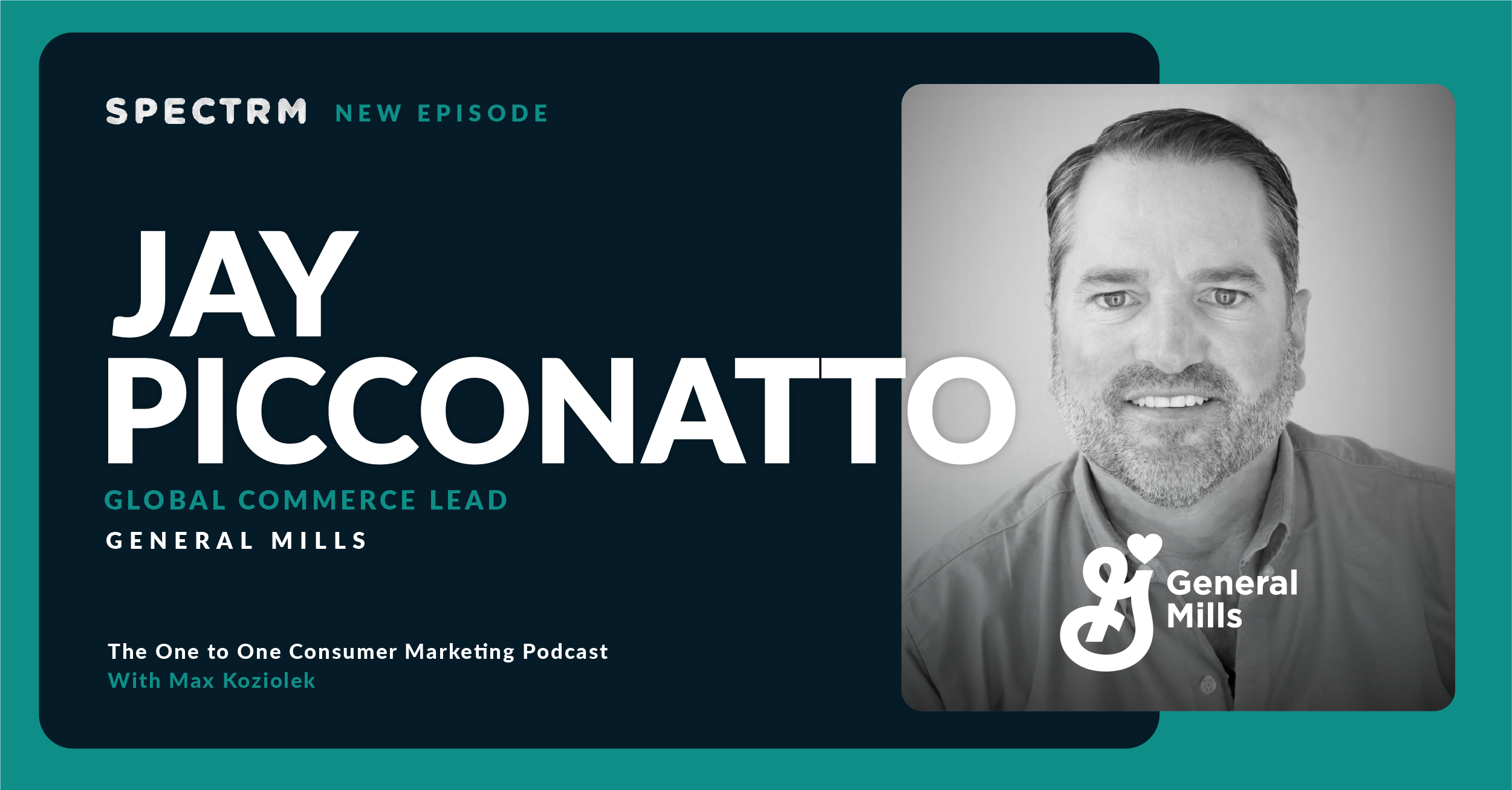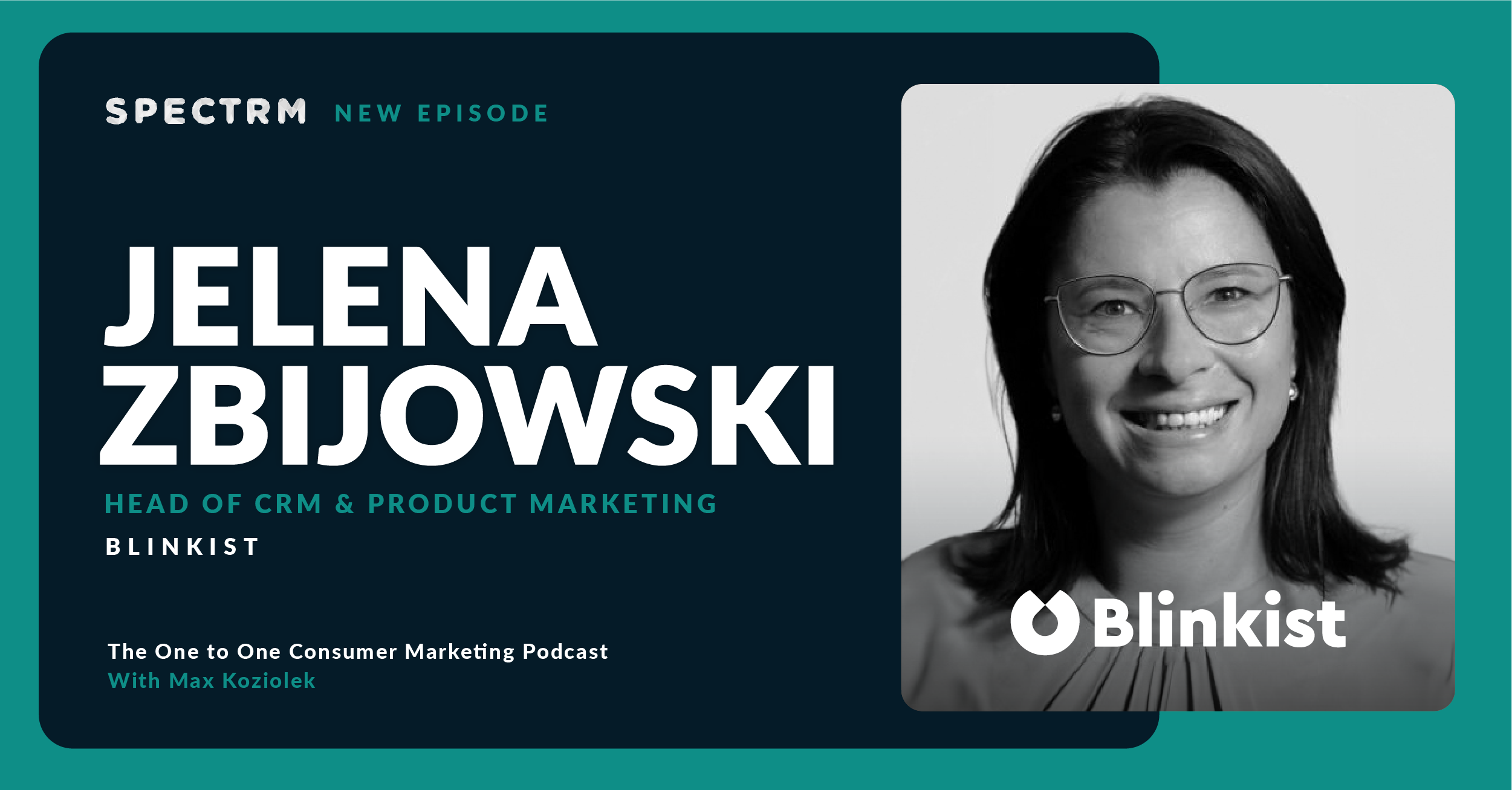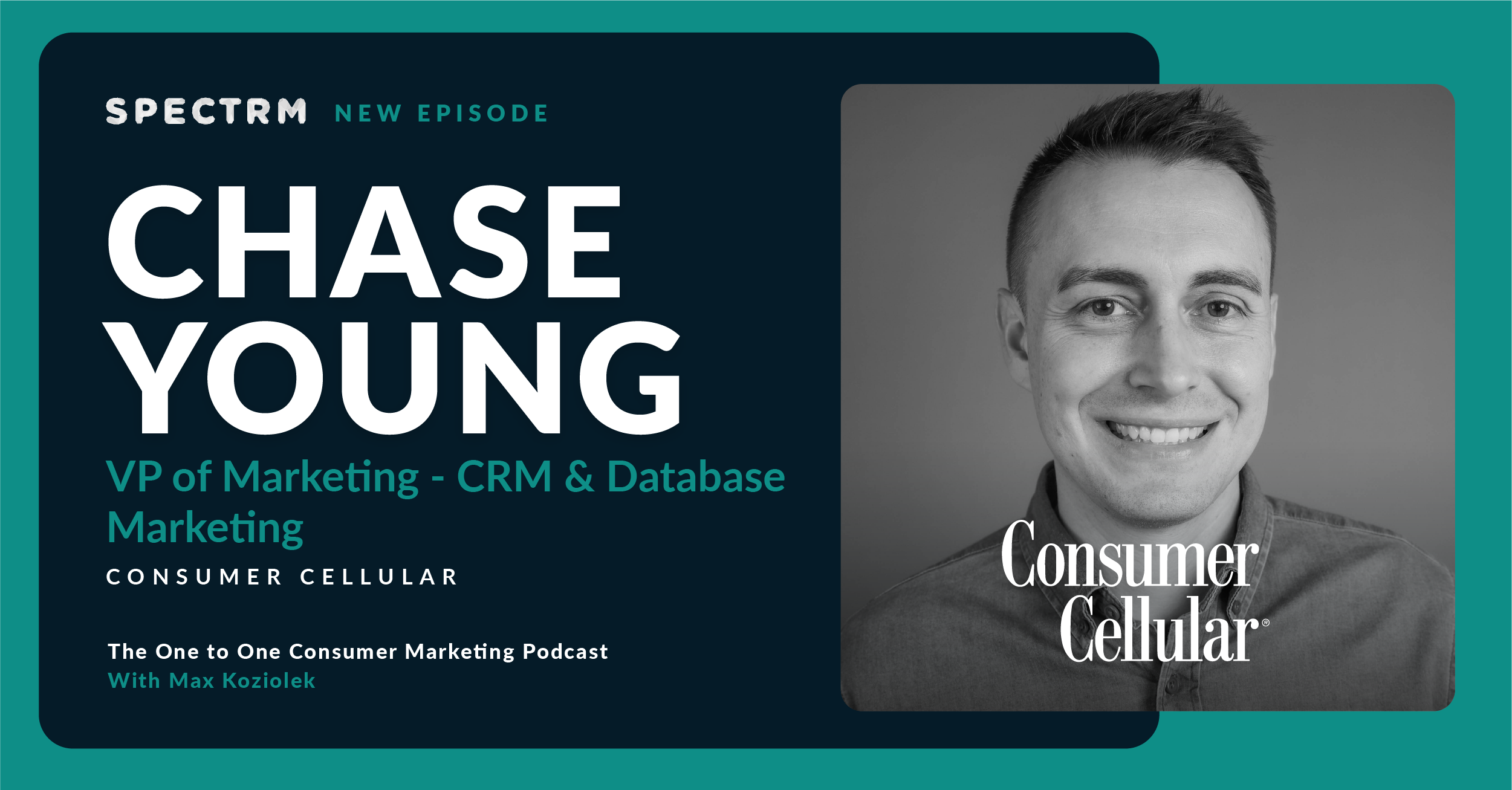Summary
In our third episode, we speak with Brian Smith, a Senior Project Manager focused on Conversational AI and Digital Assistants at Intuit. In this show, Brian takes us through lessons learned from scaling digital assistants globally and offers actionable insights on how to build a model that can be used for a variety of products and services.
Topics discussed
- How to build reusable components that can be used in multiple different product experiences.
- Thread control, and how to make sure that people are able to get seamlessly connected with a human if that is necessary for their query.
- Teaching AI bots to collect data on customers to enrich the ability to serve the customer’s query.
- Finding the “happy path” for customers and figuring out how to keep customers on that path.
- Why conversational AI is so essential for organizations to adopt today.
- What it takes for an organization to be equipped to build a conversational AI model.
- Exciting things in the future for conversational AI models.
- What organizations need to know when they are first starting to build a conversational AI model.
Guest biography
A lot of metrics that we see with chat bots today are really around call mitigation. How much cost savings have I seen to my contact center? And I've been pushing that. It's a good metric. Everything should lead to containment if you build the right experience. I really think digital assistance should augment the digital ecosystem.

I’ve found the best way to grow as a human is to constantly expose myself to new people, places and comically uncomfortable situations. I’m naturally inquisitive. I ask questions others often don’t. I’m open-minded, innovative and passionate for designing experiences and products that make life easier for millions of people.
Over the past decade, I’ve led cross-functional teams in executing experiences that have shaped my career in digital product management and marketing include fostering togetherness among 30 million veterans and their family members. Changing how students use textbooks by launching textbook rentals in the same way Netflix transformed the video market. And disrupting the financial and tax industries through emerging technology, self-serve customer experiences, conversational AI and machine learning.
I value open communication and easily adapt to change. I like to ride bikes, run and binge watch Netflix. In the evenings, you’ll find me changing people’s lives through inspirational and high-energy indoor cycling classes. Sometimes, balance is all you need.
Company overview
Intuit is a global technology platform that helps our customers and communities overcome their most important financial challenges. Serving millions of customers worldwide with TurboTax, QuickBooks, Credit Karma and Mailchimp, we believe that everyone should have the opportunity to prosper and we work tirelessly to find new, innovative ways to deliver on this belief.
Industry: software | www.intuit.com
Subscribe to the podcast newsletter
Transcript
00:00
Welcome to One to One: The Conversational Marketing podcast dedicated to helping modern marketing teams succeed in a messaging first and privacy first world. In each episode, we’ll interview a marketer who is winning with conversational marketing to distill best practices, lessons learned, and actionable takeaways. Here’s your host, Ben Gibert, VP of Marketing, Spectrm.
00:32
Ben Gibert
Hey, everyone. Thanks for listening to One to One: The Conversational Marketing podcastt. Today I’m speaking with Brian Smith, senior product manager. Focused on conversational, AI and digital assistants at Intuit. Brian is responsible for designing digital assistant experiences across a number of intuitive products. I’m personally really excited about this episode, getting to nerd out a bit more on conversational AI and design than usual, and I think that you’ll love to hear his insights when it comes to scaling digital assistants across global organizations like Intuit. Brian, thanks for chatting with me today.
01:09
Brian Smith
Hey, Ben, thanks for having me. I think it’s pretty funny that you want to nerd out because I would not consider myself a nerd.
01:20
Ben Gibert
That’s true. I guess no one really considers themselves a nerd, but I love digging into the specifics on this, and I think sometimes there’s a lot of high level talk, and I think getting into more kind of specific design challenges, tactical things, is exciting and also what our listeners love to hear about. Before we get started, why don’t you tell us more about yourself, your background, and the work that you’re doing.
01:44
Brian Smith
Yeah, that sounds great. Thanks, Ben. So, as Ben did a really great intro. My name is Brian Smith, and I’m a Senior Product Manager at Intuit, focused on our digital assistant experiences across multiple product lines. Right now, we’re currently in TurboTax and QuickBooks, but we also have products like Credit, Karma, MailChimp, and Mint, and this includes our bot strategy at a product level. So how do we scale? How do we reuse and build new capabilities or features for the digital assistant experiences that really drive across a wide range of use cases? When I talk about scale, it’s really around how do we build something that can work for multiple digital assistants. You think of our products, right, they’re very siloed. Today we have TurboTax, we have QuickBooks, they’re two very different products, but there’s ways that they can work together, and there’s also experiences that they do similarly to each other.
02:32
Brian Smith
How do we start to deliver content in real time, build out features that can be reused at a global scale across all these different digital assistants, drive more automation, UI, visualizations, and really start to set best practice in this space? Because a lot of that is not really defined today.
02:50
Ben Gibert
Yeah, I think that’s something we’ve seen a lot at Spectrm as well, is that people are very hungry for best practices, too, especially the ones that are just starting to get into this space. I’d love to dig in a little more into. You mentioned a couple of things there that I find really interesting as far as scale, one being kind of reusable components that you can have across different experiences. Can you elaborate on that more? Like, if you’re allowed to talk about it at Intuit, what are some of those components or parts of experiences that you find have been most in demand?
03:22
Brian Smith
Yeah, great question. I think an example is how do you escalate to a human that type of experience is kind of a core capability or a core feature that could be used across multiple digital assistants, and it should all be done in the same way. Instead of our team building that out separately for each individual bot, we’re working towards a strategy of having a single place that could potentially be leveraged from, and then these digital assistants use it from one place. Right. It’s like a code once build the feature and then you can kind of call into it. Today it’s very siloed across multiple different bots. There’s other examples, and I think I gave one around UI visualization, so being able to present data in a clear way and theme that based on the product. It’s the same type of visuals that you would see as components in a design language system for a given brand or company, but we’re looking at different use cases that could be leveraged across different markets, different regions, different products, so that as you interact with the digital assistant, regardless of product into it still feels and looks like a similar type of experience.
04:28
Ben Gibert
Yeah, that’s very interesting. That, I guess having more accessible speak, just almost like a template that you can plug the data into. There’s the brand colors and design elements that are added to that. That the thing that you mean?
04:42
Brian Smith
Exactly, yeah. In the same way that you’re building a web experience, right, there’s various different components that are pulled together through a design system. Same with marketing. Right. There’s probably different components that you’re pulling in to create like an email or a direct mail piece, if people are still doing that in this digital age. There’s different types of brand components that you’re pulling together. In these instances, we’re putting logic behind them because they’re presenting data or they’re orchestrating something or you’re interacting with them. In the same way that you’re filling out a form in a web view or you’re filling out some type of thing in a mobile app, right. In the same way that you’re interacting with those visual elements, we’re working towards how do we get away from just text based chat bot conversations to more of like layering in visuals that complement and augment the experience too?
05:29
Ben Gibert
Yeah, absolutely. I think that’s exactly the thing that we’ve also been seeing in terms of we operate across a lot of different messaging channels with Spectrm’s platform. I’m sure the engineers would kill me for simplifying it so much, but just even building things like integrating product carousels where you can have that functionality, but then being able to kind of push it out to the different channels. Obviously the module that we’re building at Spectrm is a single module, but then it needs to be able to interact with different interfaces, different messaging UIs as well. I’d also love to come back to the thread control that you mentioned, or I think even previously you’ve mentioned that you don’t think of it so much as thread control. One thing we see a lot in the marketing space is kind of the same thing that you mentioned, right? There are a lot of brands and obviously a lot of customers on the other side of the conversation that do want to eventually speak to a human if for some reason the interaction they’ve had with the Digital Assistant doesn’t satisfy their needs or they’re a kind of long tail customer query that’s very difficult to automate fully.
06:34
Ben Gibert
Can you talk more about how you envision that and how you see kind of building reusable components across the different experiences that you’re delivering?
06:43
Brian Smith
Yeah. A bot is only as smart as you make it, right? Today a lot of it is powered through data integrations that are variables that come from an API. Those variables can either be used to inform the bot experience behind the scenes. If this is what’s returned from the data source, then do Y, right? If X equals this, then do Y. And it’s very logical still. It’s just you’re using data to inform the experience. I think on the other side, you can also use data to be present to the customer. Right? That’s kind of where we’re going with visuals, I think, related to your question on kind of what we call human handover is starting to make the bot a little smarter in terms of having context of what the customer has been doing regardless of channel. Have they been searching for a long time, have they been on a page for a long time?
07:33
Brian Smith
They’re opening up the Digital Assistant because they are stuck. Right? How do we connect those two types of experiences to acknowledge to the customer and make it feel more seamless? In your example, maybe it’s not the bot that initially helps the customer, but rather we position an expert to help the customer initially because the use case or the thing that they’re trying to solve for the context that’s been passed in is too complex or not built out. Or we feel like the DA might not be the right platform. I just use an acronym DA is Digital Assistant internally added to It. There might be different ways that we position an expert over a digital assistant and vice versa. Right. I think related to usability and scale across digital assistants, that same type of experience should be shared or similar across, regardless of market or product.
08:27
Brian Smith
There might be some nuances in terms of what’s fixed and what’s flexed within that experience. Like, you can do this, but you can’t do that. That gives kind of the business units into it, freedom to adjust based on their business needs.
08:41
Ben Gibert
Yeah, that makes a lot of sense that they would have, I guess, specific use cases and different customer needs within that. I really love what you mentioned at the start of that with the idea of bringing in context, like context almost outside of the conversation that’s happening. I think you hear a lot in the conversational AI space about contextual language processing and kind of more generic natural language processing, but what you’re talking about is really context completely outside of that conversation. Right. You mentioned an example of someone searching a lot on the site or having a pattern of behavior before they even enter the conversation. You’re saying you’re actually able to pull some of the data about that behavior in to enrich the conversation right as it gets started.
09:29
Brian Smith
Exactly, yeah. I think I don’t like to use the word chat bots, but when they were first created, I think they were sold with like, you can do XYZ with these. They can help with task completion, they can help reduce calls to your contact center and reduce costs. A lot of metrics that we see with chat bots today are really around call mitigation. How much cost savings have I seen to my contact center? And I’ve been pushing that. It’s a good metric. Everything should lead to containment if you build the right experience. I really think digital assistance should augment the digital ecosystem. To your point, as a customer is moving around your website or moving across channels right from your website to the mobile app, like, when they open the chat bot on your site, there should be some context there that’s passed through. It shouldn’t feel like a siloed separate experience that’s just there to help you based on the use cases that you’ve built.
10:23
Brian Smith
You really need to get to a point where it’s like, for example, Ben’s been searching for 15 minutes on how to upload his W2 right for his taxes, and he can’t seem to figure that this out because it’s his first time using TurboTax. You open the digital assistant and you get a response that is like, hey, I’m the TurboTax digital assistant here to help you. Here’s some things that I might be able to assist you with. Imagine if that experience was more tailored to you and it started to personalize. I think this is where we’re going in the industry, right, of like, hey, Ben, I saw you’ve been searching for some time on how to upload your W2 I can help you do that right now, right? You can just do it right there in that experience. Imagine passing context and creating this seamless thread.
11:10
Brian Smith
Regardless of where the customer interaction is occurring, I think a lot of companies are trying to position these chat bots to be blockers to getting customers help from a live human. If you design them and build them right, and you power them in having enough knowledge and context and data sources and system integrations and anything there that powers your use cases, customers will self contain because it’s just a really good experience and they’re getting what they need, right?
11:39
Ben Gibert
Yeah, I could not agree more with a lot of the things that you’ve just said. I think where we’re seeing this is really that the more you can provide that kind of predictive and assistive experience, the more people are actually going to enjoy the digital assistant itself and be almost more satisfied than they would be with a human who might be more limited in the kind of prediction and assistance that they can actually provide. On the context side too, I think that’s something we’ve seen a lot. Again, maybe coming more from like a marketing use case mindset, but that idea of context being so crucial, right? Like, what is the entry point that a customer is then engaging with you on this messaging channel, right? Are they coming from a paid ad? Are they coming from a search query? Are they actively reaching out to your brand about a specific question, in which case you might get a more long tail query that is maybe a bit more complex, but that has a very specific intent that you can act on and get a lot of results from satisfying.
12:38
Ben Gibert
I think that’s really where we’re seeing the space too, is like, context matters a lot and you can use context to your advantage to actually make the experience much better for the customer that is interacting with the assistant.
12:51
Brian Smith
Yeah, I think you brought up some great points there. Just having context to inform that initial interaction I think would boost an interaction rate within a digital assistant very significantly. Even if it’s just a small portion of customers, right, you’re not going to be able to answer and support 100% of your audience every single time. I always push our teams here into it to think of the pareto principle, which is the 80/20 rule, right? 80% of my users should be interacting and using 20% of my content. Hopefully I said that, right? Essentially we’re designing for the majority of our audience. You mentioned long tail, right? Like, if customers get off track and they’re not going down the happy path, how do we write our prompts and our experiences to pull them back in to that 20% of use cases? Because once you get down the rabbit hole of well, what if the customer says this and then goes here and what if they say that your web of conversation design just increases significantly.
13:51
Brian Smith
We always focus on what’s the happy path when we’re designing for a specific use case. I think the context passing and sharing across channels and capabilities is really needed.
14:02
Ben Gibert
Yeah, absolutely. That’s also something that we focus a lot on with our customers is what is the happy path for this use case? Things can get more complex, but let’s start there because it also helps really kind of frame that whole idea of conversation design in a more kind of outcome oriented way. Right? You mentioned that so much of the framing around chat bots, to use the dirty word, is around cost saving and kind of mitigation or reducing contact to humans. Really this should be thought about in a way of like there is so much potential to unlock when you’re having direct conversations with your customers. How do we design conversations that actually get people to outcomes that are valuable for business and that ultimately also serve that customer right? I mean, you mentioned a few things about conversational AI and design. How would you summarize the kind of current state of conversational AI and design today?
14:56
Brian Smith
Yeah, I think there’s two pieces to that. I think of conversational AI, I’m not just thinking of digital assistance. I think conversational design, conversational AI can kind of live everywhere. I think that’s what we’re starting to see with several companies in the industry around pulling together all of these different types of capabilities that have been traditionally siloed and building out and leading with conversational and not just within chat and voice interfaces. We’re starting to see that in web and mobile applications as well around how am I positioning my content to be more user focused instead of hearing or reading? Right. Tell us your name. It’s written more in a way like what’s your name? It’s written more conversational and it’s written more in the you instance. It’s often funny, like if you hear that and then you go look at companies and you’re like, oh, these people there are writing it.
15:51
Brian Smith
Tell us what you need help with. It’s very like us, we I and it should really be, more user focused where it feels a little more friendly and so I think we’re starting to see that shift there within conversation design. That’s where I start to think of like the content design, the use cases, bot persona, conversational copywriting, different techniques there in alignment with the brand that’s been set my focus. I’ve played in both spaces, I’ve lived in both spaces. I love the tech side more, I’ve become more fascinated with the tech side. I think both sides though, need to understand the two aspects. I think when companies first start building out a conversational experience or a chat bot solution, it skews more towards development, right? We see more tech resources there. There’s not a lot of designs. They might be building out hard coded logic, hard coded workflows.
16:45
Brian Smith
There’s not a lot of prototyping done. I think really where we’re seeing a big challenge in conversation design is just around the lack of understanding the good balance that needs to be there between a tech team and a design team. We even have conversation designers that are building the actual content of what the bot says. Outside of that, we also are using our experience design team to help us provocate on prototypes and feature interactions of how the experience could work to help with features and development on some of those new capabilities that we’re looking at. There could be different aspects of design, right? It could be UI, of the actual application of what does the messaging bubbles look like. It could be what does the actual content say. It could be visualizations that we’re building and how all of that plays in. I do think if you live one side or the other, it’s always good to shadow and share because you have to be in lockstep in order to provide a really good experience and be successful in conversational AI.
17:48
Ben Gibert
Yeah, absolutely. I guess a Spectrm, I would be probably falling heavily on the design side since we’re trying to build more of like a no code platform for people to be able to focus more on the design and less on the tech side. But there’s always that trade off, right? There’s always integrations with systems, whether it’s CRM or whether it’s, like you mentioned, customer service tools, like handover protocols. There’s visualization all of those things that it’s always going to be that trade off. I agree there’s some really interesting things on both ends. While the company probably skews more towards really building that no code platform. I am also, like I said at the beginning, maybe I used the wrong term in terms of nerd out, but I just like I do love all of the technical aspects of this. How do you make that more seamless?
18:33
Ben Gibert
I think it’s a really interesting space to be in. For you, why is conversational AI and design so important for organizations today?
18:41
Brian Smith
Yeah, I think one, it’s quite an emerging discipline and field to be in. I think I shared earlier, we’re writing the practice and the principles as we build out these experiences. What’s fascinating is every customer interacts with any brand that has a digital assistant. It’s different in terms of how it’s deployed, right, how it’s invoked. I think even if you look at just the UI across several different digital assistants, even in that aspect, it’s a conversation. The way they deploy different features offering suggestions or buttons in the experience or different widgets that might appear. It’s all done differently, and I think it’s because hopefully they’ve done rapid experimentation and gotten into the core customer problem, and that a lot of those is what’s meeting the needs of their customers. I think at the same time, we’re still on this cusp of where were ten years ago when the iPhone was first launched.
19:42
Brian Smith
Now it’s like, oh, we can create all these different apps, and we have limited real estate, and how do we take what’s on our website and make a version that looks mobile friendly? I think in the same way of how were working towards trying to get resources, right. You look at mobile teams now, and there’s hundreds of mobile developers, software engineers, all of that working on those apps. I think that’s where we are today with conversation design and conversational AI is like, there’s a lot to do here, and we’re just on the cusp of it. I think there’s going to be a lot of innovation in this space over the next few years. I think a lot of people say, oh, conversational AI is like, Alexa, Google, the Google Assistant, and Siri, right? Those are all voice applications, and some have visual elements too. I think just in general, this digital assistance will play a larger role within the digital ecosystem for a company if they deploy it in the right way.
20:41
Ben Gibert
Yeah, absolutely. I mean, I think also messaging, right? Just like text based interaction, whether that’s messaging on a phone or, like, chatting on desktop. I feel like there’s obviously been enormous growth in the voice assistant industry in general, but the huge majority of interactions are still kind of message based, and it’s also more almost natural for some people, especially in the modern world. Like, everyone is doing five things at the same time to be able to interact with digital assistants in a messaging format and take advantage of some of the things, like the visualizations that you’re talking about, the different types of ways of presenting data or offering content to consumers. I feel like there’s almost more richness in the actual conversational AI messaging space than there is in the voice space. Again, maybe that’s I’m blinded by where I am.
21:29
Brian Smith
Yeah. I think there’s a lot of good use cases out there for customers when they have questions and they just want answer right there. Right. Like, a digital assistant is probably the best thing that you can deploy because maybe they have to click five different times on your website to find the answer, whereas they could just go to the digital assistant and ask the question, and it presents answer and they get it in real time. 24/7. Right. That’s like, an added benefit of this. I think identifying the right use cases, understanding how digital assistants weave into the entire ecosystem within digital or in marketing right like, how does that play into it? I think you can only scale from there as you start to understand how customers are interacting and what your customers actually want within your product.
22:18
Ben Gibert
Definitely. As far as you mentioned scale a few times, you referenced large investments in mobile when people were doing that. Does it take a certain level of organizational maturity to get into this space for you? Or what do you see are kind of the trends there, or what would you suggest?
22:35
Brian Smith
Yeah, I think organizational maturity plays into understanding where companies at. Right. Like, they could have existing tech stacks that are not very modernized or are very siloed. Right. Depending on there. Or there might be some work needed to basically gain leadership buy in that this is something that we want to start offering, or there might not be technology in place if it’s a startup or younger type of company. Right. I do think organizational maturity plays in, especially if it’s an organization that’s been around for some time and then as that layers in, how do you start to scale a team once you’ve gained buy in from various leaders? And how does that team look? And you only go from there. Right. I was told we had the largest conversation designer team in the world. I don’t know if that statement is true, but we have global designers all over the world supporting all of our digital assistants in each market.
23:31
Brian Smith
As you build, you scale, you identify a resource, and you go from there. I think showing the level of impact and finding the right use case to do a proof of concept on to gain buy in and show the bottom line impact is a no brainer if a leader sees it. I’ve seen it several times.
23:50
Ben Gibert
Yeah, that’s what we’ve seen as well from a marketing side. Right. We always have to start with a very kind of specific use case proof of concept. People can be hesitant to get into the space or to start using our platform because they struggle to understand that. When we unlock that initial use case and they see the value, it spreads through the organization and people get more excited about all the possibilities. Right. You can build on top of that use case. You can start adding more value. You can even start to understand. Okay, what is the audience that we have within this messaging system, on this messaging channel that we can kind of reengage in different ways? There’s a lot of exciting things there. I want to jump back quickly just to executive buy in, because I think getting executive buy in for this type of work at an organization is not always easy.
24:36
Ben Gibert
What was the process that you were involved in at Intuit? Or can you just talk more about how you see that play out, what you see and be.
24:43
Brian Smith
Successful so here the digital assistance experiences had already been built and underway before my time before joining. I think what we see in the industry in terms of like, it’s related to the maturity of an organization and I think that drives a company’s ability to scale in these types of interactions. If the organization is less mature, then you might focus more on gaining leadership buy in right. To allow for us to start to scale in this space. In larger orgs I mentioned, tech stacker tools may not be as advanced or they might not be modernized, or there might be limitations in data availability and reuse of the existing capabilities to hook into your digital assistant. I think the biggest complexity that comes once you’ve gained leadership buy in is actually sharing the process of how to build out these types of interactions because it’s one to one interactions right, with the digital assistant.
25:36
Brian Smith
Experiences can be very nonlinear and helping leaders also understand the complexity of how these experiences can come to light, whether you’re integrating data or just doing if then statements. Right. Regardless, there’s a lot of time and energy put into there and I think sharing that will help drive scale in this space. Even if you’re just launching a digital assistant for the first time with a handful of use cases, that’s still a significant amount of time.
26:04
Ben Gibert
Yeah, absolutely. I guess at the end of the day, that one to one experience is also something that organizations really crave, right? Not just in terms of the brand affinity daily that it can create if it’s a positive experience, but also it really is almost like a gold mine of customer insights, right. You are speaking one to one with your customers. I feel like that’s what every organization really wants is to really understand what do our customers want. I feel like this is such an exciting channel to do that through because you are just talking directly to your customers at the end of the day.
26:35
Brian Smith
Yeah, exactly. I think related to gaining leadership buying, it’s not just selling the concept of what Conversational AI is or what a digital assistant is and how that can improve our experiences. I think it’s also sharing the value that it drives and understanding how this should be scaled within the organization, like identifying what types of roles might be needed. Right. In a past life, I had put together, this is the future of what Conversational AI is going to be and these are the types of roles that we have gaps in. Right. We don’t offer these types of roles today and these are things that we’re starting to see in the industry. Being able to bring that in because I think a lot of people that play in this space are a team of one, right? They’re one person that’s responsible for doing the design and building out the capability and understanding.
27:23
Brian Smith
The strategy of how this weaves into everything. At that point, it’s like, how do I prioritize? What takes the most priority across this one to end list of use cases that we want to build. Being able to sell the vision, but then understand what types of resources are needed to support that vision and then taking your leaders across after you’ve sold the concept, how do you keep them top of mind to drive more modernization across technology and enhancements in this space too?
27:54
Ben Gibert
And do you mind sharing? What are some of the specific roles that you think are kind of at the time when you wrote it, what was missing?
28:00
Brian Smith
Yeah, I think we see it in the industry today, right? A lot of it was conversation designers were starting to scale up, I want to say around 2019, 2020. Now we’re starting to see more product managers, more program managers. It’s like, now that we have this bot, how do we scale it? Right? We have a designer that’s building on these use cases, but how do we scale this bot? I think what a product manager can come in and do is support increased capabilities and features and customer experience in the same way of what were talking about earlier around passing context and enhancing the experience as the designers are writing the content. Maybe it’s automated and driven in different ways and not hard coded, and how do we get more data into the product? It’s shifted from focusing a lot on the design, which we still see a lot of roles in the design space, but I’ve started to see a lot more come in on the product side.
28:58
Ben Gibert
Yeah, definitely. This is something that I know some of the things that you’ve brought up in this conversation have been top of mind for a lot of our product managers at Spectrm as well. I’m sure they’re going to be excited to hear your insights. I mean, I could go on all day. I’d love to maybe looking forward . Like, what excites you the most about conversational AI at this moment in time?
29:20
Brian Smith
Yeah, I said it before. I think we’re kind of at the start of this journey of where we’re going, and I think the future is still a little unknown at this point of how this stuff is going to come to fruition. What I can tell you is that people in this space that work on chat and voice interfaces really just want to offer a positive customer experience. I think the way we do that is really through connecting these and augmenting chat bots to existing experiences. I think we’re not trying to make the bot feel like a human right. We’re rather wanting to put human like qualities and make the conversation feel more natural and appealing and easy to follow and allow the customer to know their place in the conversation in the same way that we’re having a back and forth conversation right now. We’re holding context, we understand what each other has asked each other.
30:06
Brian Smith
I think just having the conversation feel more interactive, that drives trust with your customers. Even then I think where we’re going to is like interchangeability in terms of experiences, right? Today there’s this traditional position, the Digital Assistant, and then go into a human as a fallback if the Digital Assistant can’t support. I think where I see this going and my thoughts in this space is like bots talking to other bots, right? Like bringing in MicroSmart bots that are specific on a given product, right. In the marketing space, you could have a bot for a given product and to the customer they’re talking to one bot, one experience, one UI. Behind the scenes it’s orchestrating and answering questions from different microcosms of bots. I think that’s one instance and then like the human and bot interchangeability of not having starting with the bot and going to a human and kind of the conversation just dies there, right?
31:04
Brian Smith
Like, okay, great, we escalated successfully and didn’t contain that customer. Imagine an experience where you could start with a bot, pull in a human to the conversation assist, and then the human leaves and the bot continues, or vice versa. You’re talking to an expert and they pull in a Digital Assistant, chat bot into the conversation and they’re assisting you or thinking about the different participants in a conversation and it almost becomes like a group chat, but they’re all working together hand in hand. I think that’s where we’re starting to go.
31:35
Ben Gibert
Yeah. I think that’s ultimately what also builds that kind of trust. Like you said too, bringing in a human or an expert at a point where they can also have more context from the bot already of like, okay, I can help this person immediately because this is their need. Now that I can help them with that, they can continue a conversation on where the bot might be able to offer more value and really continuing the conversation, going in a way that’s really just building on top of the immediate need of the customer. Also again, like you said, predicting what they might need next, offering more assistance, like recommending other types of content that might add more value and ultimately might make them trust you more as a brand for providing that very seamless and positive experience that seems so personal and so firmly centered around what it is that they’re looking for and not necessarily what you’re trying to get out of the conversation with them.
32:27
Ben Gibert
Right? Exactly.
32:28
Brian Smith
I think too then is really how do we persist conversations over time, right? In the same way that we’re texting back and forth with friends and family members, conversations happen over hours at a time. Like what if you didn’t have to talk with a chat bot synchronously and you were getting support, but you needed to go into the product and answer some questions or find some information to answer the bot. Or maybe you have to go make a phone call to your spouse to get information and then you forget to answer the bot and you come back the next day. How does that conversation persist over time so that it can pick up where it left off? I think a lot of what we see in the industry today is like, the context is not held past a certain amount of time. A customer comes back in with the intention of finishing whatever they had initially started, but the digital assistant kind of resets and is like, hey, great to see you, Ben, here’s some things I can help you with today.
33:27
Brian Smith
Right. And you’re like, yes, exactly. Yeah. I can literally scroll up and see the last interaction I had with you and it’s clearly you asked me a question and I’m trying to answer you, but now you have to restart the whole flow. It’s just because of the way chat bots are built today. They’re built very linear. I think another thing that we’re going to start seeing is these nonlinear paths of being able to map grammar to specific portions of dialogues. Right. No longer mapping grammar at the top of an intent. All this grammar hits this one intent and the customer has to go through it. Like being able to extract entities in more real time and be able to leverage those within your NLU to get into deeper parts of the dialogue for customers that are very specific. Right. I think that’s also a direction I see going behind the scenes within the natural language understanding side.
34:20
Ben Gibert
Oh, yeah, definitely. I feel like we could devote an entire podcast episode to just getting into the natural language understanding and kind of intent and entity side of things. I would love to do that. Maybe for another time. I think we’re getting close to a full episode here, so I’d love to maybe just take a step back and ask you more tactically. What are your top three pieces of advice for other organizations that are kind of just getting started in this space in conversational? AI and design, I think.
34:49
Brian Smith
Don’t be afraid to be bold and try new things. If something doesn’t work and you experiment, learn why it didn’t work and grow from there. I think it’s big in this space. There’s not one way to do it. I think the second piece is understanding what your conversation design process is. There’s not one right or wrong way here either, right. Like, what works best for you and what people need to be pulled in at the right time as you’re starting to build out these different use cases. The third piece, I think, is really starting to understand what is NLU and how can that play into your experience, especially if you’re just getting started, right? These are just small steps to take as you’re learning, but understanding NLU, natural language, understanding and how that type of algorithm works, and how you start to train your digital assistant to pick up on the patterns, right, in words or groups of words or numbers from a database, different things like that.
35:41
Brian Smith
And, yeah, I think that there’s a lot of really great training out there as well on several different sites. If you just type in conversation Designer training or certification or different things like that, you’ll find a bunch. I think too, like understanding user experience, like UX and UI principles also play in this space too. The biggest thing is don’t be afraid to fail. I will stand by that 100%. If your MVP is so small that it’s 80% of where you wanted to get to and fails and it breaks and it’s not what you thought, don’t be afraid to put something out there in front of your customers just to get initial learnings.
36:18
Ben Gibert
Yeah, that makes a lot of sense. I think I’ll just repeat where you started. So be bold. Experiment, test and learn. I think that’s where when you’re getting into a new space like this, that really is where you have to start. I think that’s that, along with some of the other things you’ve mentioned, are really great pieces of advice. Listen, Brian, I’ve really enjoyed having you on the podcast. I feel like there’s so many different topics we could spend a lot of time talking about. I think before we wrap up, if people want to follow your journey and learn more about what you’re doing and get insights to your things that you’ve published, where should they go?
36:55
Brian Smith
Yeah. So I’m very active on LinkedIn. You can just search Brian Smith into it. There’s a lot of Brian Smith out there, so I suggest you put into it in there. I love connecting with others in the field and getting their perspective. I think as we start to share our perspective and thoughts, it’s only going to help people in the space grow and get further ideas to kind of plus one and take it one step further. I’m also on Medium, it’s at brian.com, all spelled out. I also have a website where you can see my work and other things there. It’s Brian Smith without any vowels. Brnsmth.com yeah, so it’s been really great. I’ve enjoyed this conversation. Ben.
37:33
Ben Gibert
Yeah, it’s been really great to have you here, Brian. So, just as a quick reminder, go check out Brian Smith on LinkedIn, on Medium, or on his own website without any vowels, which I have an affinity for. And as a reminder, thanks again. I look forward to seeing more of your work in this space. I definitely want to keep in touch as a reminder to our listeners out there. If you want more insights about conversational marketing, conversational AI design, don’t forget to subscribe to the podcast on Apple, Podcasts on Spotify, or wherever you get your podcasts. If you’re also looking for more strategic and tactical content on conversational marketing and all things conversational, also head over to our LinkedIn page and follow Spectrm. You can check out some of our reports at Spectrm.io Thanks for listening. I hope you enjoyed this conversation as much as I did.
38:27
Ben Gibert
It’s been a pleasure having you, Brian.
38:28
Brian Smith
Same here, Ben. Thanks so much.
